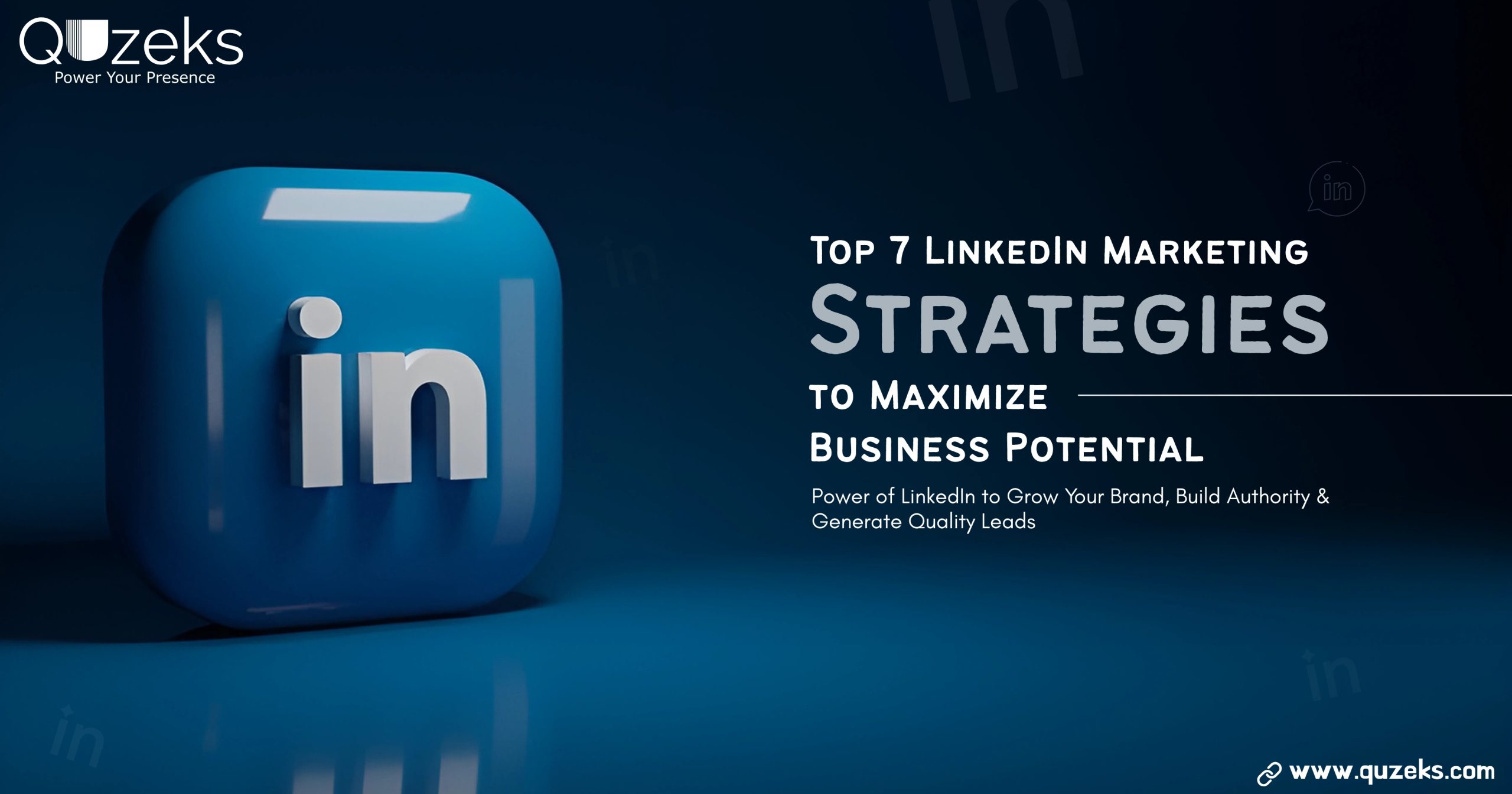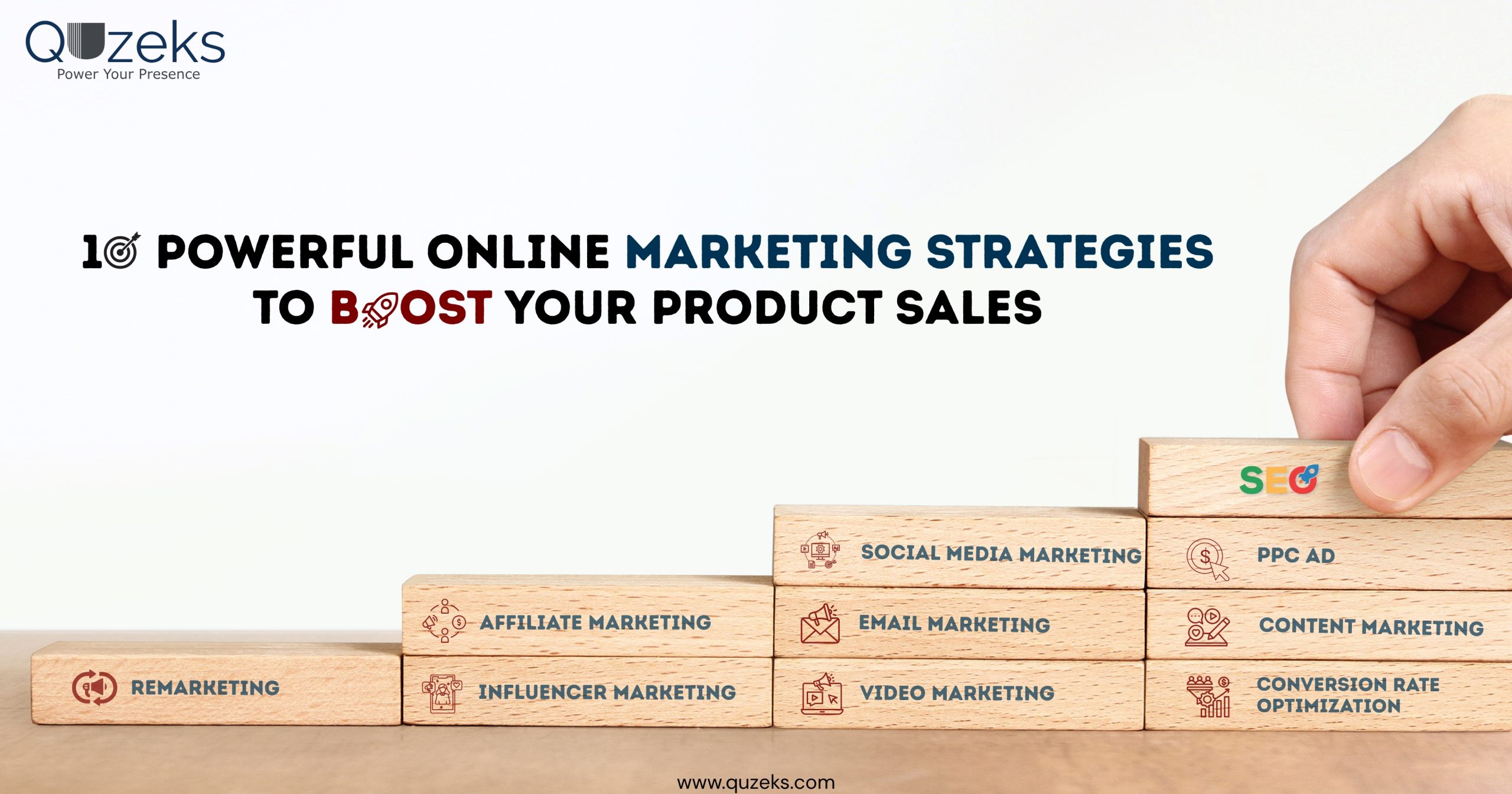In today’s digital-first business environment, LinkedIn has emerged as more than just a professional networking platform. It’s now a powerful marketing tool for companies looking to boost visibility, establish authority, and generate high-quality leads. Whether you’re a startup, a growing enterprise, or a well-established organization, having a well-structured LinkedIn Marketing Strategy can be a game-changer for unlocking your full business potential. This blog outlines the Top 7 LinkedIn Marketing Strategies that can drive significant business growth and help you use LinkedIn effectively to build a lasting impact in your industry.
Why LinkedIn Matters for Business Growth
Unlike other social media platforms, LinkedIn is tailor-made for professionals, decision-makers, and businesses. It provides an ideal environment to connect, collaborate, and convert. With over 1 billion users globally and a large percentage being business professionals, the potential to reach quality leads is unmatched.
LinkedIn also allows businesses to:
-
- Build B2B relationships
-
- Position themselves as thought leaders
-
- Increase brand credibility
-
- Drive targeted traffic to websites
The platform has transformed into a digital ecosystem that supports long-term relationship building, which is the backbone of sustainable business success.
Benefits of LinkedIn Marketing
When done right, LinkedIn marketing offers a wide range of benefits for businesses across industries. Here are some of the key advantages:
-
- Access to Decision-Makers: LinkedIn connects you directly with managers, executives, and business owners.
-
- High-Quality Leads: Users on LinkedIn are more likely to convert into clients, especially in B2B industries.
-
- Brand Awareness: Consistent visibility on LinkedIn helps build brand recall and trust.
-
- Thought Leadership: You can position your brand as an expert through articles, posts, and engagement.
-
- Content Longevity: Unlike other platforms, good content on LinkedIn continues to perform and attract views over time.
Whether you are a service provider, product seller, or consultant, these benefits play a significant role in increasing your business potential and digital footprint.
How to Develop a LinkedIn Marketing Strategy
Before jumping into content creation or ads, you need a clear roadmap. Here’s how to build a strong LinkedIn Marketing Strategy:
-
- Define Your Goals: Are you aiming for lead generation, brand visibility, talent acquisition, or event promotion?
-
- Know Your Audience: Understand your ideal client’s industry, job role, and pain points.
-
- Audit Your Profile: Make sure your company page is complete, professional, and reflects your brand values.
-
- Create a Content Calendar: Plan a mix of educational, promotional, and engagement-driven content.
-
- Leverage Tools and Analytics: Use LinkedIn analytics and third-party tools to track performance and refine strategies.
A strong strategy ensures consistency and focuses your efforts on activities that truly move the needle for your business growth.
1. Optimize Your Company Profile for First Impressions
Your company’s LinkedIn profile is the digital front door to your brand. A professional, optimized profile creates trust and reflects your credibility. Make sure to:
-
- Use a high-quality logo and banner that reflects your brand identity.
-
- Write a compelling company description that clearly states who you are, what you do, and how you add value.
-
- Include relevant industry keywords (like “digital marketing,” “supply chain services,” or “eco-friendly packaging”) to enhance visibility.
-
- Add your website link, location, and custom CTA button (like “Visit Website” or “Contact Us”).
An optimized profile builds trust and sets the stage for your marketing efforts, significantly influencing your brand’s business potential on LinkedIn.
2. Post High-Value, Insight-Driven Content Consistently
The heart of any LinkedIn Marketing Strategy lies in content marketing. Consistent, high-value posts not only educate and inform your audience but also reinforce your position as a thought leader.
Types of content to post:
-
- Industry insights and news
-
- Company updates and milestones
-
- Behind-the-scenes posts
-
- Employee spotlights
-
- Video snippets or animations
-
- Client testimonials or success stories
-
- Infographics and statistics
Ensure that each post adds value to your audience and aligns with your brand message. Engage your network by asking thoughtful questions, using hashtags, and encouraging discussions in the comments.
3. Leverage LinkedIn Ads for Targeted Campaigns
LinkedIn Ads offer an unmatched opportunity to target specific professional audiences. Whether you’re promoting a service, a whitepaper, or a webinar, LinkedIn Ads can help you reach decision-makers based on:
-
- Job title
-
- Industry
-
- Company size
-
- Geographic location
Popular LinkedIn Ad formats include:
-
- Sponsored Content
-
- Message Ads (InMail)
-
- Dynamic Ads
-
- Text Ads
With precise targeting, LinkedIn Ads can enhance your lead generation strategy and provide a measurable ROI, fueling long-term business growth.
4. Engage with Your Audience Authentically
Engagement is a two-way street. Don’t just post and log off. Stay active by:
-
- Responding to comments and messages promptly
-
- Sharing other industry-relevant posts
-
- Reacting to and commenting on posts by your network
-
- Congratulating others on milestones or promotions
This level of interaction builds relationships and humanizes your brand, a critical step in unlocking business potential on LinkedIn.
5. Empower Employees to Be Brand Ambassadors
Your team can be one of your most powerful assets on LinkedIn. Encourage employees to:
-
- Share company content
-
- Post about their work experience
-
- Engage with the brand page
When your employees actively talk about your business, it amplifies your reach and builds organic credibility. This strategy boosts trust among potential clients and plays a crucial role in overall business growth.
Host internal LinkedIn training sessions to help your employees improve their profiles and understand how they can contribute to brand awareness.
6. Use LinkedIn Analytics to Improve Your Strategy
To ensure your LinkedIn Marketing Strategy is working effectively, track and analyze performance metrics such as:
-
- Post impressions and engagement rate
-
- Follower growth
-
- Demographics of your followers
-
- Page views and click-through rates
Use these insights to refine your content, posting schedule, and ad targeting. Data-driven decisions ensure that you’re not just working hard but also working smart.
7. Showcase Expertise Through LinkedIn Articles and Newsletters
For B2B companies especially, long-form content is an excellent way to establish thought leadership. LinkedIn Articles and Newsletters give you space to:
-
- Dive deep into industry topics
-
- Provide detailed how-to guides
-
- Share research findings
-
- Express company opinions or stances
These pieces live on your profile and continue attracting engagement over time, boosting both visibility and authority. By consistently publishing articles, you increase brand recall and trust—two pillars of unlocking business potential on LinkedIn.
Common Mistakes to Avoid in LinkedIn Marketing
Even with a strong strategy, some common errors can derail your efforts:
-
- Overly promotional content without value
-
- Inconsistent posting schedules
-
- Ignoring DMs or comments
-
- Neglecting to track and optimize performance
Avoiding these pitfalls can significantly increase the effectiveness of your LinkedIn campaigns and help in unlocking your business’s full potential.
Final Thoughts: LinkedIn Isn’t Just for Job Seekers Anymore
LinkedIn has evolved into one of the most valuable platforms for businesses to grow, connect, and thrive. By following these top 7 LinkedIn marketing strategies, businesses of all sizes can enhance brand awareness, build strong relationships, and drive high-quality leads that contribute to long-term success.
In a landscape where digital impressions often come before physical ones, a robust LinkedIn Marketing Strategy is essential to maximizing your business potential.
Why Quzeks Is the Right Partner for Your LinkedIn Marketing Success
If you want to enhance your brand’s LinkedIn performance with a reliable partner, consider working with Quzeks. As a forward-thinking digital marketing company in Rajkot, Quzeks specializes in personalized strategies that align with your business goals.
Rather than offering one-size-fits-all solutions, Quzeks takes the time to understand your audience, voice, and vision. From creating content calendars to managing targeted ad campaigns, they bring clarity and structure to your LinkedIn marketing journey.
Reference:
LinkedIn by Wikipedia[1].
LinkedIn’s marketing strategy focuses on connecting professionals and businesses through content, community, and targeted outreach. It emphasizes building thought leadership, engaging with niche audiences through organic content, and using advanced targeting for sponsored ads. Businesses use LinkedIn to drive B2B awareness, generate qualified leads, and establish credibility through consistent, value-driven interactions and optimized company pages.
The 4-1-1 rule is a content-sharing guideline that suggests for every six pieces of content you post, four should be educational or entertaining, one can be soft promotional, and one can be a hard sell or direct promotion. This balance helps maintain audience interest, avoids overwhelming followers with constant sales content, and encourages more engagement by delivering value first.
Key Performance Indicators (KPIs) for LinkedIn marketing include metrics like:
- Engagement rate (likes, comments, shares)
- Follower growth
- Post impressions and reach
- Click-through rate (CTR) on content and ads
- Lead conversion rate
- InMail response rates
LinkedIn is one of the most powerful platforms for B2B marketing because it offers direct access to professionals, decision-makers, and business owners. It allows businesses to build authority through content, generate high-quality leads via advanced targeting, and foster meaningful connections through networking and group participation.
For optimal visibility and engagement, businesses should aim to post on LinkedIn 3 to 5 times per week. Consistency is key—regular posting keeps your brand top-of-mind and helps build trust with your audience. Mix up your content by sharing industry trends, tips, behind-the-scenes content, success stories, and occasional promotional posts to maintain a balanced and effective LinkedIn presence.




